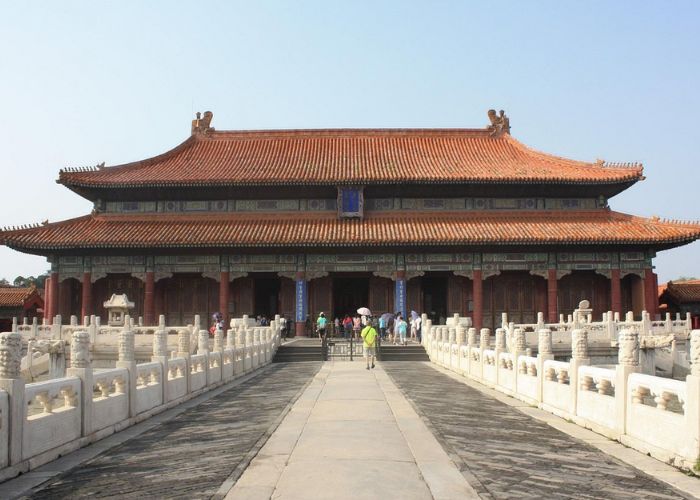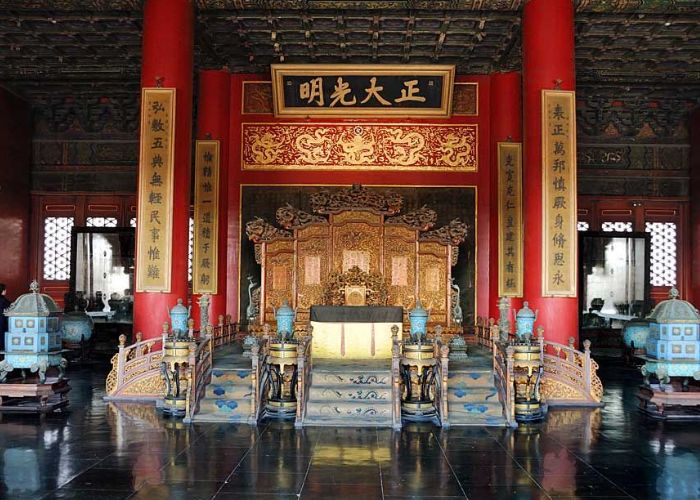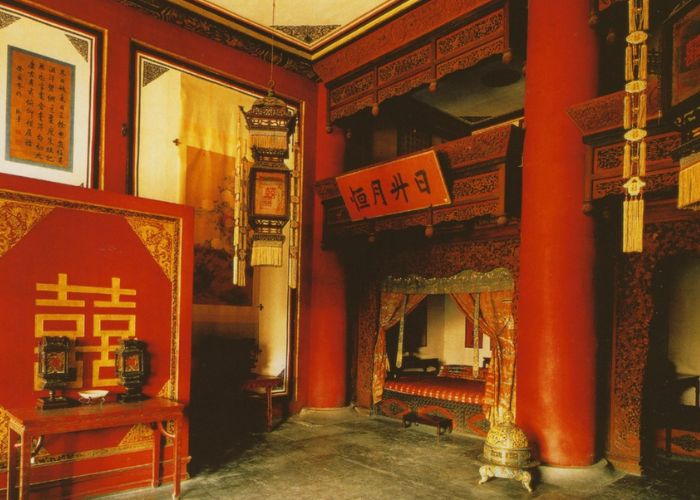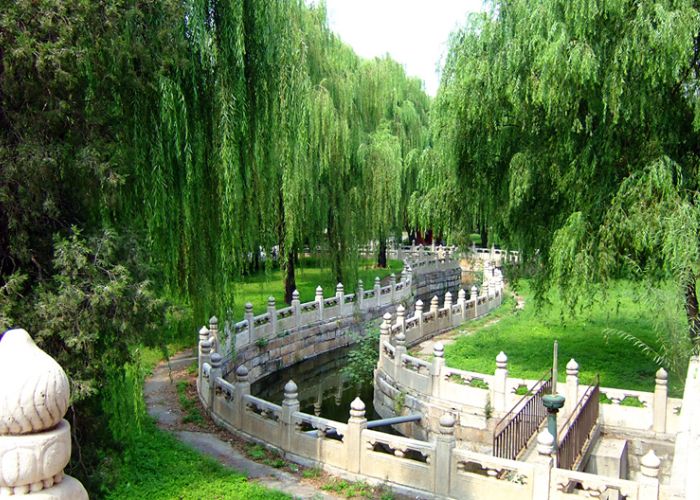Forbidden City - A structure of timeless beauty in China #part 2
The Forbidden City is the largest palace, a place that holds the history of China for many generations. This is also one of the largest and most classy architectural works in China. Join us to learn about history and architecture to have the best experience when visiting China. continue part 2
Royal Palace
The Hall of Heavenly Purity is one of the most important palaces in the Forbidden City. This is where the emperor lived and worked in the Chinese court. The Royal Palace plays an important role in the country's history and culture, imbued with royal tradition and splendor. The Royal Palace has magnificent and unique architecture. It is located in the center of the Forbidden City and was built on a high foundation. The building is built in a traditional Chinese style with a square roof and floors. The roof is decorated with intricate patterns and unique artistic details. Inside, the Royal Palace has rooms such as bedrooms, offices and bodyguard rooms. Each room is decorated with sophistication and care, reflecting the emperor's luxury and power.
The Royal Palace has magnificent and unique architecture. It is located in the center of the Forbidden City and was built on a high foundation. The building is built in a traditional Chinese style with a square roof and floors. The roof is decorated with intricate patterns and unique artistic details. Inside, the Royal Palace has rooms such as bedrooms, offices and bodyguard rooms. Each room is decorated with sophistication and care, reflecting the emperor's luxury and power.
The Imperial Palace is where the emperor lives and works at court. It is where important issues of the country are decided and where high-ranking officials are received. During his rule, the emperor used the Imperial Palace to receive officials, listen to the people, and discuss with important people. In addition, the Royal Palace is also the place where royal ceremonies and important events in the royal court are held.
The Imperial Palace in the Forbidden City is an important symbol of the power and splendor of the Chinese court. With its beautiful architecture and deep historical significance, it attracts visitors from all over to admire and explore the beauty and splendor of the royal palace.
Can Thanh Palace
Qianqing Palace was built in traditional Chinese architectural style, characterized by square roofs and floors. It is rectangular in shape and has immense dimensions, with a length of about 64 meters, a width of about 37 meters and a height of about 30 meters.  The foundation of Can Thanh Palace was built of marble, a precious and special material, with a high-class and solemn character. Qianqing Palace is exquisitely decorated with traditional Chinese artistic motifs and details such as dragons, phoenixes, patterns and symbols that represent power and luck.
The foundation of Can Thanh Palace was built of marble, a precious and special material, with a high-class and solemn character. Qianqing Palace is exquisitely decorated with traditional Chinese artistic motifs and details such as dragons, phoenixes, patterns and symbols that represent power and luck.
Visitors coming here will admire the beautiful architecture and magnificence of the Chinese royal palace. If you have the opportunity to visit the Forbidden City, don't miss this attraction!
Kun Ninh Palace
Khon Ninh Palace (Hall of Preserving Harmony) is located between Can Thanh Palace (Hall of Supreme Harmony) and Cung Chinh (Hall of Central Harmony). Khon Ninh Palace plays an important role in royal ceremonies and welcoming distinguished guests. Kunning Palace has traditional Chinese architecture, with square roofs and floors.  The building is rectangular and quite large in size, with a length of about 35 meters, a width of about 20 meters and a height of about 17 meters. The roof is made from precious wood, black in color and decorated with motifs and motifs. Traditional Chinese symbols such as dragon and phoenix. Inside the Kunning Palace there are unique statues and decorations, demonstrating the sophistication and artistry of the Chinese people.
The building is rectangular and quite large in size, with a length of about 35 meters, a width of about 20 meters and a height of about 17 meters. The roof is made from precious wood, black in color and decorated with motifs and motifs. Traditional Chinese symbols such as dragon and phoenix. Inside the Kunning Palace there are unique statues and decorations, demonstrating the sophistication and artistry of the Chinese people.
Kunning Palace in the Forbidden City is a must-see destination for tourists who want to explore the architecture and history of the Chinese imperial court. With its beauty and magnificence, Kun Ninh Palace carries within it an important part of the country's cultural and powerful past.
Royal flower garden
The Imperial Garden in the Forbidden City is a beautiful royal garden and imbued with Chinese culture. With a large area and exquisite design, it is a destination not to be missed when visiting the Forbidden City.
Ngu Hoa Vien garden has a rectangular shape with an area of 12,000 square meters, with paths, lakes and green areas. It is surrounded by high concrete walls and has main entrance gates. The paths and paths in the garden are paved with traditional red bricks, creating a beautiful and elegant space. The garden is divided into many different parts, including the front yard, back yard and lake area. These sections are connected by bridges and small roads. The landscape in Ngu Hoa Garden has a strong Chinese character, with ornamental trees, flowers and bushes carefully planted and cared for. Trees such as snake trees, maple trees and peach trees create a green and cool space. One of the special features of Ngu Hoa Vien is the small lakes and water fountains. This creates a peaceful and relaxing space, accompanied by the sounds of flowing water and peaceful fish in the lake.
The landscape in Ngu Hoa Garden has a strong Chinese character, with ornamental trees, flowers and bushes carefully planted and cared for. Trees such as snake trees, maple trees and peach trees create a green and cool space. One of the special features of Ngu Hoa Vien is the small lakes and water fountains. This creates a peaceful and relaxing space, accompanied by the sounds of flowing water and peaceful fish in the lake.
In addition, the garden also features decorative structures, including gates, bridges and sculptures. These details demonstrate the sophistication and artistry of Chinese culture. Ngu Hoa Garden in the Forbidden City is a place that attracts tourists because of its natural beauty and traditional Chinese architecture. With fresh landscape and peaceful space, visitors can relax and enjoy the serenity among the majestic palaces.

































